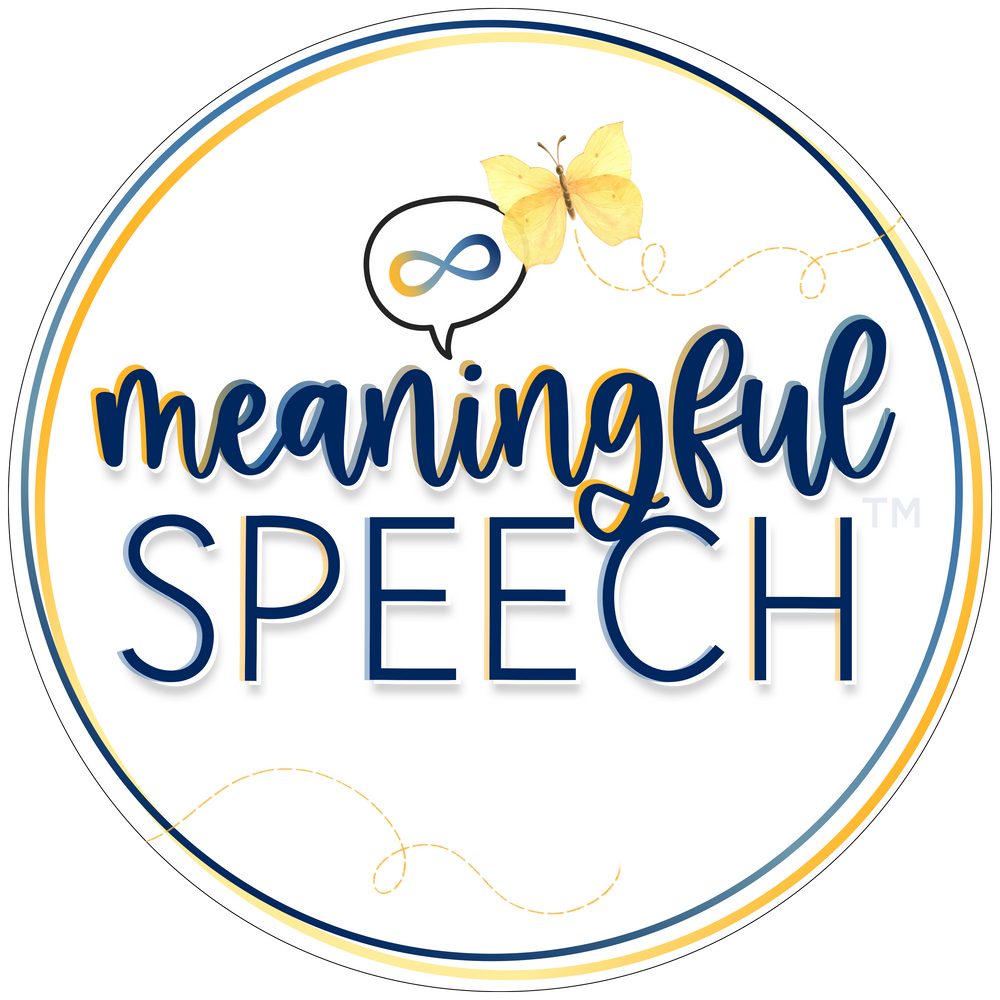Things to consider when modeling potential gestalts
Apr 10, 2024
Our goal for gestalt language processors in Stage 1 is for them to increase the amount and variety of mitigable (easy to mix and match and/or trim down in stage 2) gestalts that they are using spontaneously through naturalistic language modeling. When we model language for a Stage 1 GLP, it doesn’t always mean that it will be picked up as a gestalt for that child. Think of it as a modeling language that could potentially become gestalts. We’re modeling potential gestalts for the child. Ultimately, it’s up to the child to decide what becomes a gestalt for them! Here are some things to consider when modeling language for gestalt language processors…
Is it easily mitigable?
One of our goals for gestalt language processors in stage 1 is to increase the amount of easily mitigable gestalts they’re using spontaneously. A mitigable gestalt is one that can be easily mixed and matched or trimmed down in stage 2. Here are some examples:
Easily Mitigable
- Let’s get a snack.
- How ‘bout we go home
- That's so silly!
- We did it!
- I’m jumping high.
Not easily mitigable
- Peas and carrots, carrots and peas.
- Pop goes the weasel!
- Fish (single words)
- To infinity and beyond
Is there enough variety?
When we’re modeling language for gestalt language processings, we want to think about all of the ways we communicate. Another goal that we have for gestalt language processors is to increase the variety of mitigable gestalts they’re using. This allows their language to have more variety as they move into the later stages as well. Some of the communicative intents we want to be thinking about when modeling include:
- Expressing wants/needs
- Joint action routines
- Surprises
- Transitions
- Protesting
- Sensory-motor experiences
- Shared joy
- Help
- Commenting
- Self-Advocacy
Is it individualized and meaningful to the child?
There is NOT a list of potential gestalts we recommend modeling for all gestalt language processors. The potential gestalts we choose to model should be individualized and meaningful to that child. We cannot decide what becomes a gestalt for a child, it’s up to them! You’ll want to…
- Think about what is useful to the child.
- Figure out what the child wants to tell us.
- Do the detective work and figure out what they are communicating with their gestalts right now.
Is it from a child's perspective/joint perspective?
We want to model language that is either from the child's perspective (how they would say it themselves) or from a joint perspective (you and the child). We want to AVOID using language that uses the pronouns "you" and "you're". This is because the child will repeat the language you model verbatim. Using pronouns "you" and "you're" will make it seem like the child has pronoun reversal when they don't. This often results in them having inappropriate grammar goals to correct pronoun reversals from clinicians who do not understand gestalt language development and natural language acquisition.
For example, if the child is hungry, rather than saying "oh you're so hungry!" model language from their perspective: "I'm hungry!" or a joint perspective:
Is it attempting to expand upon a single word gestalt? It shouldn’t be.
If the child has single word gestalts, do not try to model language that attempts to expand on those. We cannot build upon or expand on single word gestalts when a child is living in stage 1 (later on in the the language development we can). We want to always acknowledge them, but also leave them alone when a child is still in Stage 1.
Example:
Child has "dog" as a stuck single word gestalt (it holds a much larger meaning than just the word itself, they use it for every animal they see). We wouldn't try to expand on this and say something like "It's a dog!" Instead, acknowledge their single word gestalt and model something completely novel like "It's so big!".
Is the child well regulated?
All children best pick up on our language models when they’re well regulated. We want to focus on proactively supporting a child’s sensory needs rather than waiting until they’re dysregulated and reactively supporting them. A dysregulated child will not pick up on our language models. If you’re unsure on how to best support a child’s sensory system, we always recommend working with an occupational therapist knowledgeable in sensory processing.
Want to learn more in-depth information about how to support gestalt language processors?
- There are many free podcasts, webinars and articles to get you started. A comprehensive list of resources can also be found on our website. We just released a new FREE masterclass on echolalia and child-led therapy that is perfect for anyone starting their learning journey or on the fence about purchasing our courses!
- Consider taking the Meaningful Speech course to learn more about how your child or client processes language, how you can help support them from echolalia to self-generated (original flexible) language, child-led therapy, and neurodiversity-affirming practices. Looking for something shorter? We have a 1-hour introductory course perfect for extended family, daycare or school staff.
- Consider taking our AAC + Gestalt Language Processing course. It will teach you how to identify, evaluate and support gestalt language processors who use AAC or who you think might benefit from AAC.
- Look for a speech-language pathologist (SLP) who "gets it" and can help you in supporting your child's language development. Check out our registry for SLPs who understand gestalt language processing and child-led therapy.
- Are you a school-based or private practice clinician looking for intake forms for new clients/students or creative visual reminder posters for your space? Check out the Meaningful Speech Marketplace.
